F1: Azerbaijan (Baku) GP Preview
–by Mark Cipolloni–
The 2023 FIA Formula 1 World Championship season will continue this weekend with Round 4, the Azerbaijan Grand Prix, at the Baku City Circuit.
This will be the first Sprint weekend of the year, and with the changed format, the work teams and drivers have done in the simulator becomes even more important to make up for less practice time on track. The format of the weekend is a little bit different to the sprint events of recent years with Saturday now a self-contained day and Friday evening qualifying alone setting the grid for the Grand Prix on Sunday.
It will be vital to have a good car right from FP1. The circuit is challenging for the drivers and the engineers and with, very little time to set the car up ahead of Friday evening qualifying, there will be more uncertainty than normal when the cars enter Parc Ferme.
Azerbaijan joined Formula 1’s calendar in 2016 with a city-based event navigating the markedly different districts of capital Baku, where West and East meet adjacent to the Caspian Sea.
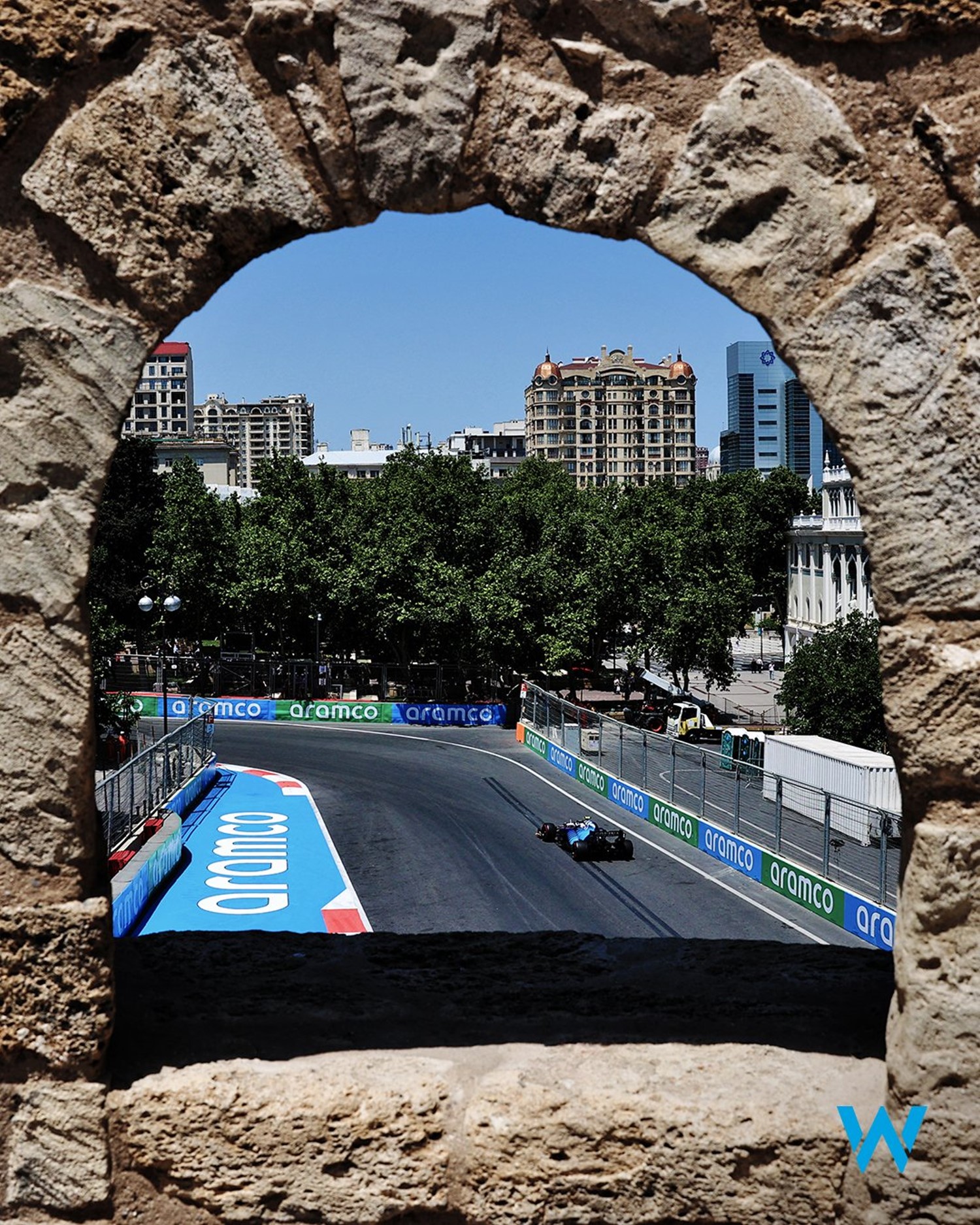

Baku sits as the lowest capital city in the world, at 28 meters below sea level, and has a history that stretches back a thousand years. That is reflected in the layout of its Formula 1 circuit, which winds its way alongside preserved ruins of the Old City, glass-fronted skyscrapers, and architecture from various periods that reflects Baku’s cultural legacy.
The one thing Baku never disappoints for is an exciting race, as we’ve seen many over the past years. The long straight and DRS zones really aid that.
The first sector of Baku City Circuit comprises lengthy straights punctuated by heavy braking zones and 90-degree corners, before a second sector that incorporates tight and twisty turns mixed with blind high-speed segments. That includes the notorious turn 8, at just 7.6 meters wide, where part of the fortress walls doubles up as an apex.
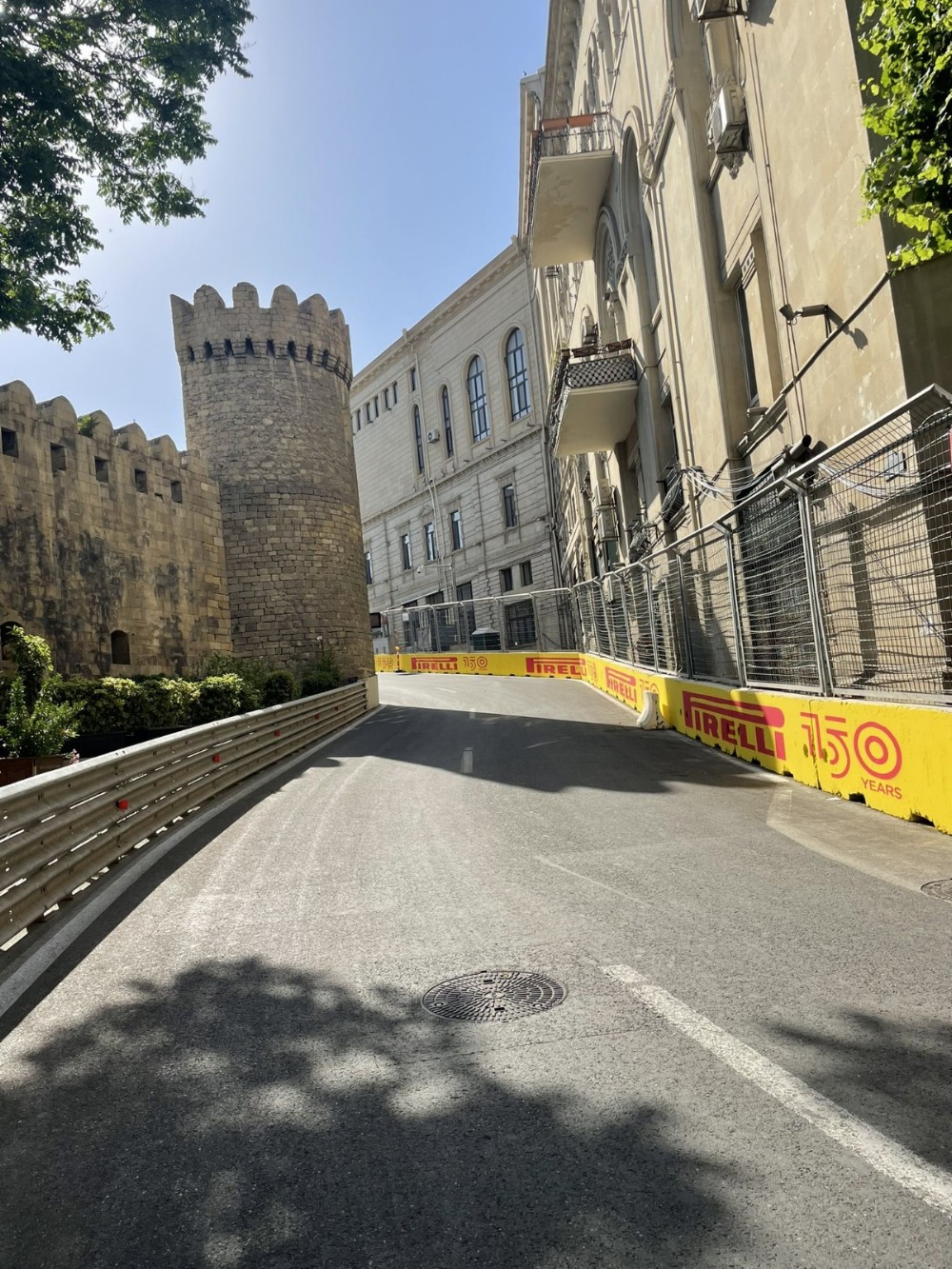
The final sector is almost entirely full throttle as drivers hurtle along one of Baku’s main thoroughfares at speeds approaching 360km/h, where the effect of a slipstream can be very profitable. Baku’s varying demands means a compromised set-up is required, as teams strive to maximize both aerodynamic prowess and straight-line speed, while ensuring tires and brakes are kept in their optimum operating windows.
With the Azerbaijan and Canadian events running on back-to-back weekends in June – it highlights the need for a regional calendar, as being proposed currently by F1 for 2023 onwards.

Circuit Insight
Race interruptions: Expect some form of stoppage in the race. In the six races held, there have been seven Safety Cars, two red flags and three Virtual Safety Cars. Strategy can be influenced by the timing of these. The softest compound of Pirelli’s range, the C5, will make its 2023 debut here.
Sprint: The first of six Sprint events this season. The format has altered somewhat, with the grid for both races being determined by separate qualifying sessions. Baku has never hosted a Sprint before. New for 2023, DRS will now be activated after one lap of green flag running in the Sprint.
Overtaking: Despite being a street circuit, Baku offers plenty of overtaking opportunities, with an average of 40 overtakes per race, not including the opening lap. Around 66% of those make use of DRS. It’s clearly not all about qualifying in Azerbaijan.
Strategy: Nevertheless, strategy is key in Baku, partly because the track has a lower-than-average pit-loss time of just 21 seconds. Despite higher speeds and hard braking at various points on the track, Pirelli brings its softest C3, C4 and C5 compounds.
Safety Car: 6 of the 7 races so far at Baku have involved either a Safety Car or a Virtual Safety Car; most have seen multiple disruptions. In both 2017 and 2021, the race was halted by a red flag, creating strategic variance. There has been an average of five DNFs each year.
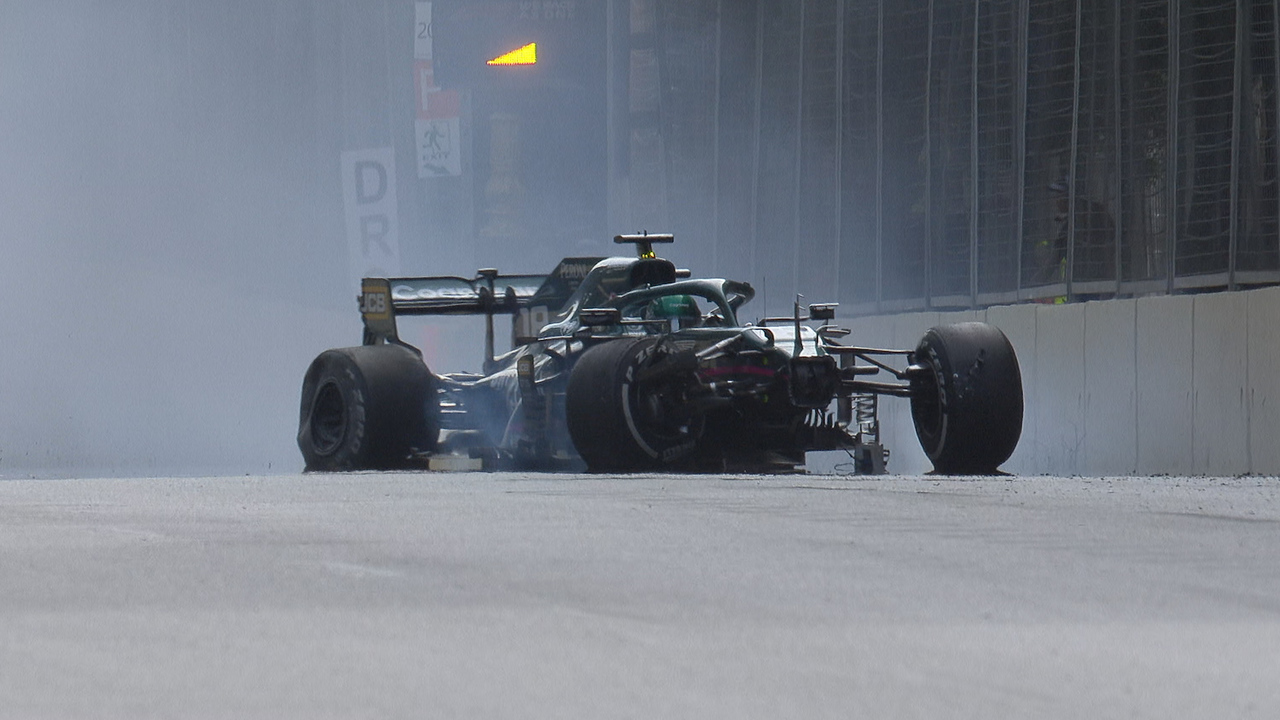
An iconic, and heartbreaking, Baku radio message 💔#AzerbaijanGP #F1
— Formula 1 (@F1) April 26, 2023
Weather Forecast
Friday, April 28 – FP1 and Feature Race Qualifying weather
Conditions: Partly sunny and breezy; a very high UV index of 8 with S winds blowing at 24 km/h and wind gusts at 41 km/h and no probability of a thunderstorm.
Maximum temperature expected: 21°C | 69.8°F
Minimum temperature expected: 14°C | 57.2°F
Chance of rain: 0%
Saturday, April 29 – Sprint Shootout and Sprint Race weather
Conditions: Beautiful with times of clouds and sun; a very high UV index of 9 with SSE winds blowing at 13 km/h and wind gusts at 32 km/h and no probability of a thunderstorm.
Maximum temperature expected: 24°C | 75.2°F
Minimum temperature expected: 15°C | 59°F
Chance of rain: 1%
Sunday, April 30 – Feature Race weather
Conditions: Sunny through high clouds and warmth; a moderate UV index of 4 with N winds blowing at 17 km/h and wind gusts at 35 km/h and no probability of a thunderstorm.
Maximum temperature expected: 29°C | 84.2°F
Minimum temperature expected: 20°C | 68°F
Chance of rain: 1%
Azerbaijan Grand Prix: facts & figures
6. The number of different winners in as many Formula 1 Grands Prix held in Baku. The first race, in 2016, went by the name of Grand Prix of Europe and was won by Nico Rosberg. From 2017 onwards, the race was renamed Azerbaijan Grand Prix and was won by Daniel Ricciardo, Lewis Hamilton, Valtteri Bottas, Sergio Perez and Max Verstappen. Ferrari has twice finished second, with Sebastian Vettel in 2016 and Kimi Räikkönen in 2018. Charles Leclerc was fourth in Baku in 2021 and Carlos Sainz finished fifth in 2018.
70. The number of different nationalities that make up the population of Baku. It owes its multi-ethnicity to having always been on the crossroads of commerce and travel, on the old Silk Road and more recently being home to a flourishing gas and oil industry.
400. The number of mud volcanoes in Azerbaijan. Small mounds, anything from a few centimeters to meters in height, they spew out a mixture of clay and water combined with saline substances such as salt, bromine and iodine as well as methane and hydrocarbon gases. Azerbaijan is home to half the world’s number of these volcanoes that can sometimes erupt up to 150 meters high.
700. The years that the Yanar Dag eternal flame has burned, due to natural gases burning beneath the sand. This 116 meter-high hill, also known as the “mountain of fire”, is situated on the Absheron peninsula, around 25 kilometers from Baku. Legend has it that the fire was started by an unwitting shepherd as he knocked out his pipe.
3000. The approximate number of carpets housed in Baku’s Carpet Museum. The shape of the actual building is also linked to its contents, presenting the form of a rolled up carpet.
Unlocking the Lap
The Baku City Circuit is one of the longest tracks of the season, with some of the most technical corners in Formula One. Both high-speed straights and tight, low-speed corners create a balancing act for car set-up.

Despite being another street circuit, Baku couldn’t be more different to Monaco. There are plenty of opportunities to overtake, with Turn One and Turn Three being the most popular spots to gain advantage.
The opening straight from pole to Turn One is just 170m – the second shortest of the year after Monaco, meaning plenty of skill is needed to prevent getting caught out at the start.
The first section comprises several 90-degree corners, but the most crucial of these is Turn Two. It precedes a long straight, so getting the exit spot on is critical to lap time. As with all these turns, the walls are ready to punish anybody who gets them wrong.
Turns Eight through 11 make up the famous Castle section. An aggressive entry to one of the tightest sections in Formula One is crucial to a good lap, before the climb up the hill and into the tricky, cambered T11, which sets up the fast sweepers that follow.
Turn 16 is another 90-degree left-hander and, while the wall on the exit is set back from the track, there is a large curb which can destabilize the car and catch drivers out. The corner precedes one of the longest full-throttle sections on the calendar and large amounts of time can be lost here.
From Turn 16 onwards, the next 1.5-miles is a fast, flat-out section, effectively becoming the longest straight of the calendar. It’s here that the claimed the fastest speed in F1 history was recorded, at 378km/h (234.9mph) in 2016.
Fact File: Azerbaijan Grand Prix
- The Baku City Circuit has been relegated to fourth longest on the F1 calendar this year – the introduction of the Las Vegas Grand Prix, with a layout that is 0.117km greater in length, moving into third.
- The track does rank highest in terms of gear changes per lap though; a total of 72 the joint-most across the season, the same number as seen in Singapore.
- The Baku City Circuit also ranks highest in terms of braking energy. Two heavy stopping zones lead to a braking force of more than 4g being sustained for over 0.4 seconds at times.
- No driver has won more than once in Baku, with six different winners from the first six races.
- From these six winners, only two have won having started from pole position: Nico Rosberg in 2016 and Valtteri Bottas in 2019, both driving for Mercedes-AMG PETRONAS F1.
- Given the nature of a street circuit, it’s perhaps no surprise that the Safety Car has seen action in three of the last five editions – with seven individual deployments across this collection of races.
- The section from the exit at Turn 16 to the braking zone for Turn 1 is the longest full-throttle passage of the year. It is around 200 meters longer than the segment from Turns 1 to 5 at Spa-Francorchamps.
- The 2.2 km start/finish straight therefore contributes to a very difficult restart for the leader, with a strong tow for the driver behind leaving them vulnerable into Turn 1.
- The name Baku derives from the shortened Persian name Bad-kuye, meaning “wind city”, along with Bad-kube, which means “wind-hitting.” Both terms refer to the famously consistently strong winds that blow through the city.
- Most street circuits are not necessarily known for top speed, but Baku is different because of its long straights. Topping out at 322 km/h, cars can reach the second highest speed of the season so far – only in Miami have we seen a higher top speed of 324 km/h so far.
Tires
Like Monaco, Pirelli have provided the softest of their compound range, which should be suited to Baku providing that they don’t grain. The smooth track surface can make warm-up difficult, but this is compensated by the long lap.
This is the first time that teams have used the C5 compound competitively this year. The tires should all work well at this circuit, but an allocation that is different from previous Sprint Events will add to the variability as the weekend progresses.
The camber of the roads, large gradient changes, and the varying track width all add to the challenge at this circuit and ensure that setting the car up to be strong over the full 6km lap is very tricky. However, the same circuit characteristics that provide the setup challenge also lead to good racing and exciting on-track battles in Azerbaijan. Taming the streets of Baku is not easy, but it can be enjoyable and rewarding when done well.
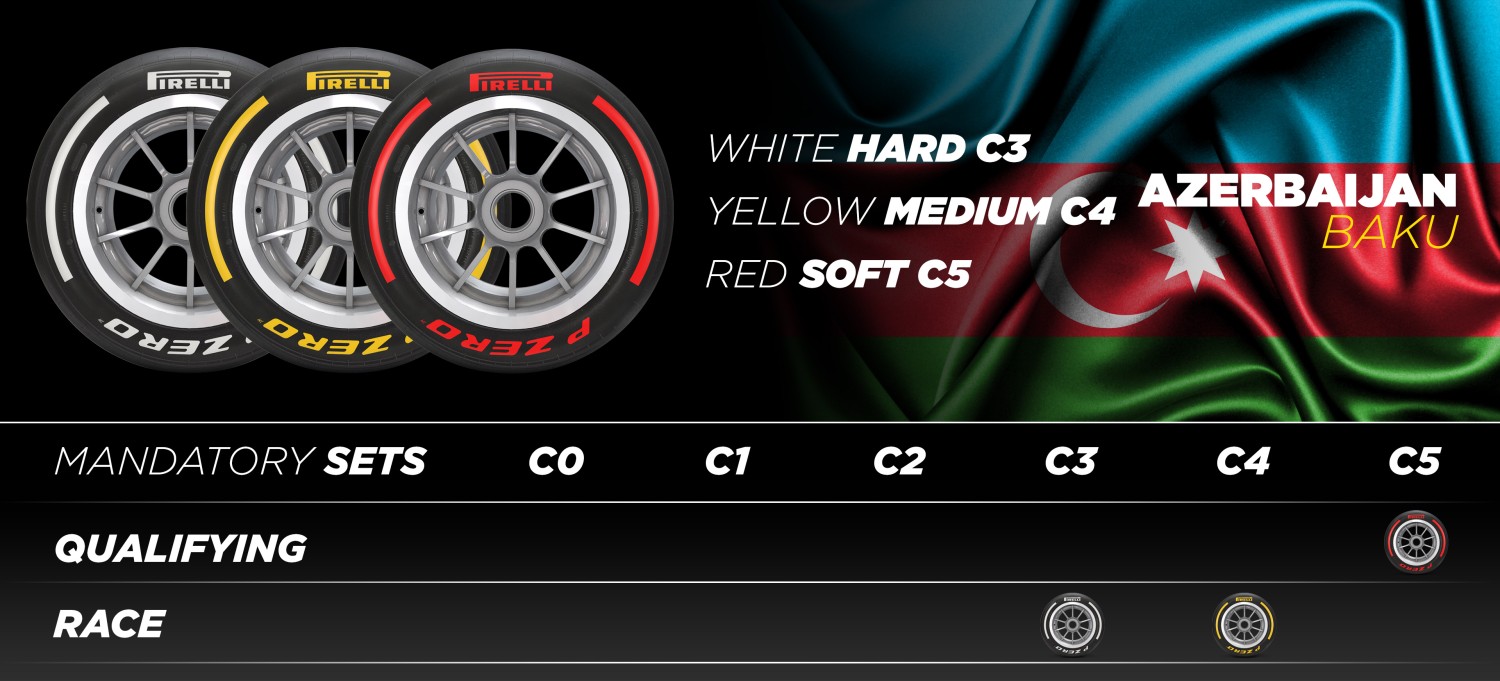
2022 Baku Race
While three Ferrari-powered cars spewed their guts all over the Baku asphalt, the two Red Bulls cruised to an easy 1-2 to win the Azerbaijan GP.
Max Verstappen schooled his Red Bull teammate Sergio Perez and beat him by 21 seconds to stretch his lead in the Drivers Point Chase.
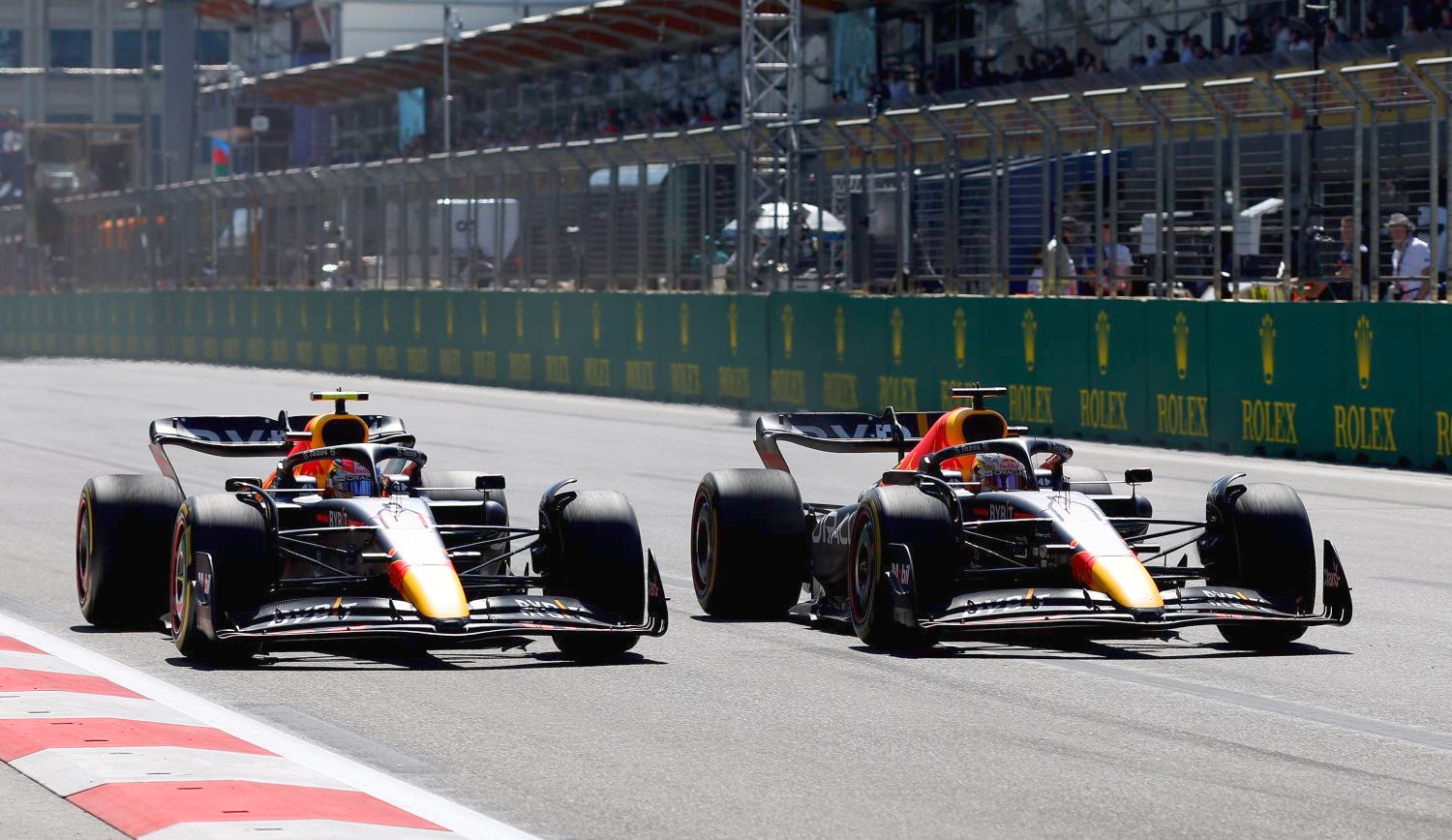
A great day for the Red Bull team, in both the drivers’ and constructors’ championships.
“Today we had incredible pace in the car, we could look after the tires and chip away at it,” said Verstappen. “A tiny bit lucky with the retirement, but the car was quick today. To have a 1-2 as a team as well, a really good day for us.”
When race leader Charles Leclerc’s Ferrari blew up, Max Verstappen passed Sergio Perez and pulled away unchallenged.
However, Verstappen was confident he could have caught Charles Leclerc when his Formula 1 world title rival was leading the race before the Monegasque’s Ferrari engine failed.
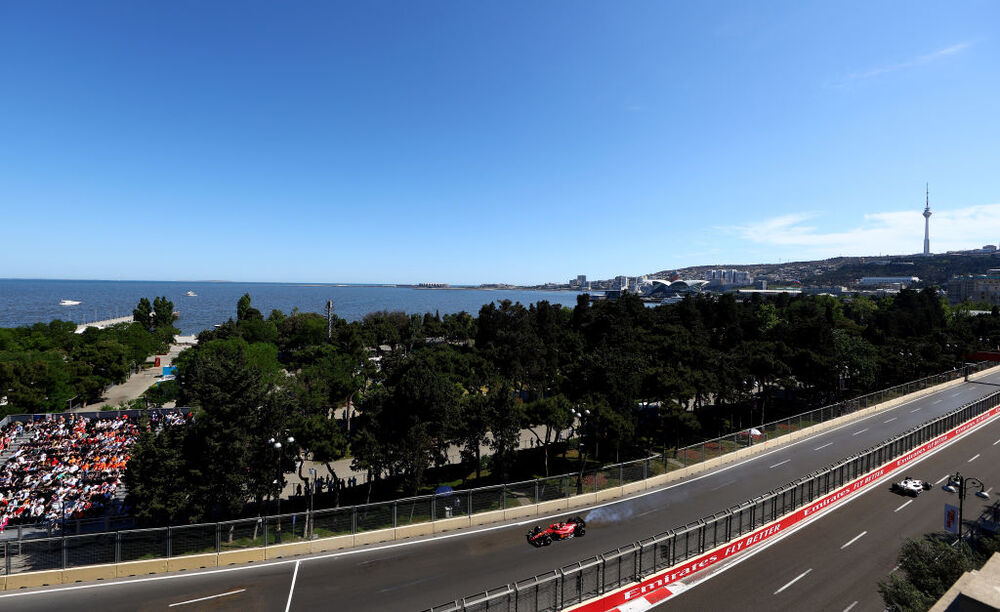
“I think today we had an incredible pace in the car, we could really look after the tyres and we could chip away at it, pass for the lead,” Verstappen said after securing his 25th F1 win over Perez by 20.8 seconds.
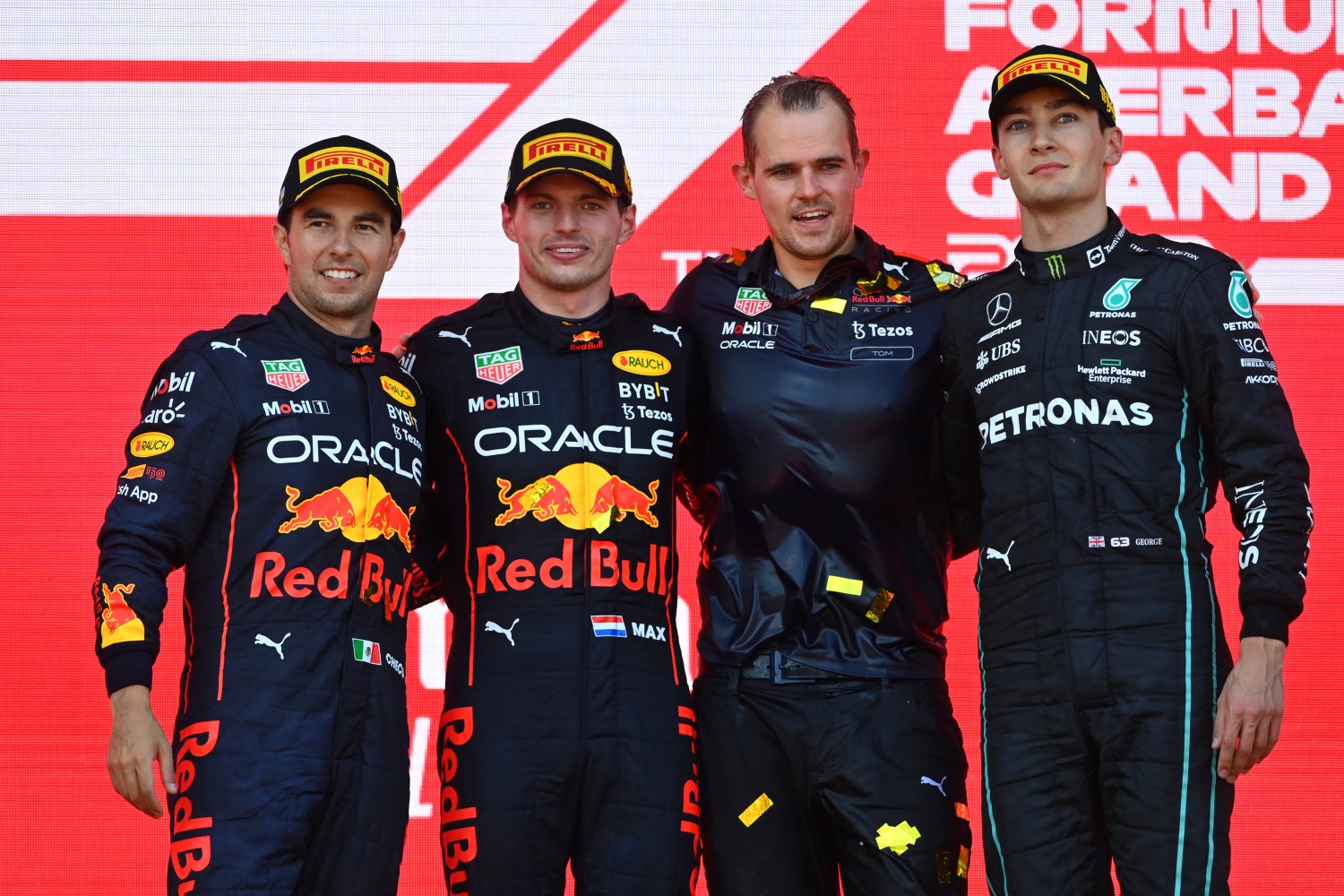
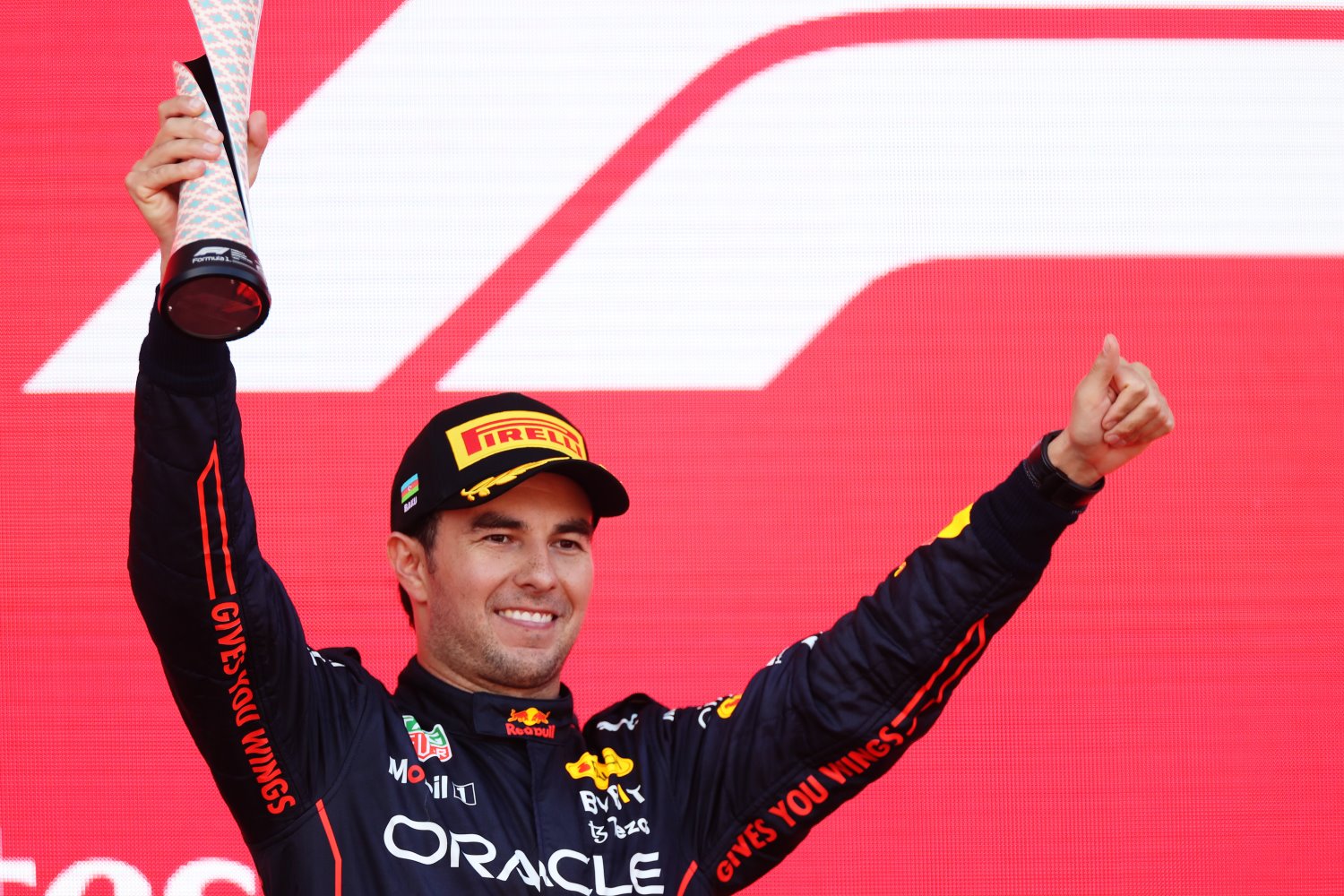
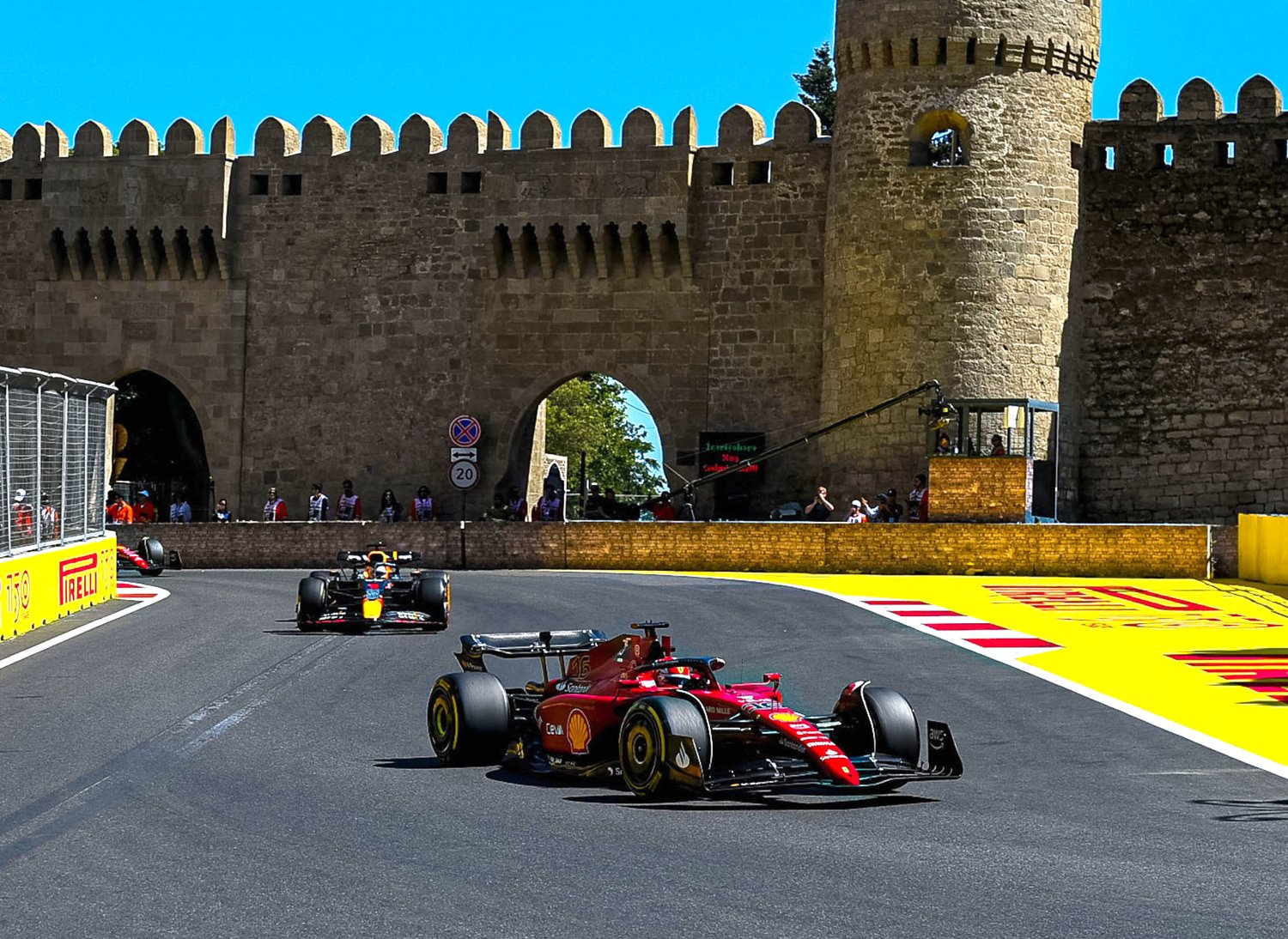
“But then, of course also, maybe a tiny bit lucky because with the retirement.
“But I think nevertheless, our car was really good today. So I could have closed that gap. Then of course you have a race on your hands.
“But overall, yeah, really, really happy with how the balance of the car was today.”
Hydraulics did in Carlos Sainz Jr. early on, and Leclerc was forced out with a blown engine while leading.
“Unfortunately, we missed the VSC stop, there was some miscommunication, we were a bit unlucky there,” said Perez. “At the restart, I got too much deg on the medium tire, it was extremely high for me and Max was stronger on that medium stint.”
